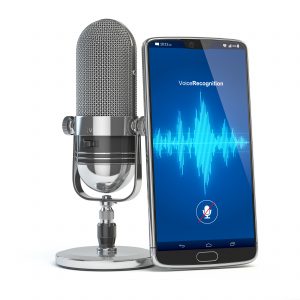
With a predicted U$ 127 billion market by 2024, the impact of voice technology is beginning to make its way into customers’ lives – offering new types of interaction, opportunities for engagement, and a more personal and closer connection. Moving beyond podcasts, the next generation of audio interaction between people and brands will be focused on artificial intelligence and the growth of the “internet of things.”
Amazon, Apple, and Google already have their voices; they fill their customers’ daily lives worldwide, providing all types of interaction with information updates or as an assistant, making their lives easier.

REALTED: What is conversational ai?
Synthetic Voice vs AI Voice
A synthetic voice is a computer-generated version of human speech.
Speech synthesis is a type of information output in which a computer reads words to you out loud in a real or simulated voice through the device’s speaker; this is also known as text-to-speech (TTS).
Artificial intelligence, also known as AI voice, is a type of synthetic voice that operates uniquely. The difference is that AI voice employs ‘deep learning,’ a type of artificial intelligence, to convert text into audible human-sounding speech.

How to Create Your Voice
It is possible to create your own AI voice, thanks to the rapid advancement in voice technology. You can use a TTS system that converts normal language text into speech; essentially, a computer will translate text and select human voice data (speech) based on that text, then play that sound to you. Most TTS systems have their voice database, but you can record your voice to go along with the text/speech.
These types of software use artificial intelligence technology to clone voices in real-time and generate synthetic voices from text-to-speech generators.

Speech synthesis has vastly improved in recent years as a result of advances in machine learning. Previously, the most realistic synthetic voices were created by recording audio of a human voice actor, separating their speech into component sounds, and splicing these back together like letters in a ransom note to form new words. To generate raw audio of someone speaking from scratch, neural networks can now be trained on unsorted data of their target voice. The result is faster, simpler, and more realistic.
Examples of AI Voice Generators
- Resemble.ai – Resemble.ai is a free voice cloning software that uses artificial intelligence technology to clone voices in real-time and generate synthetic voices from text-to-speech generators.
- Respeecher – Respeecher is an online tool that uses deep learning and artificial intelligence technology to convert the speaker’s voice into the voice of a famous person in real-time.
- Google’s Voice Cloning – Google’s AI research, dubbed Voice Cloning, allows a computer to read aloud using any voice.
- Play.ht – This allows users to generate audio and control the speed at which the audio progresses.
Also read: Who are the leading conversational ai companies?


